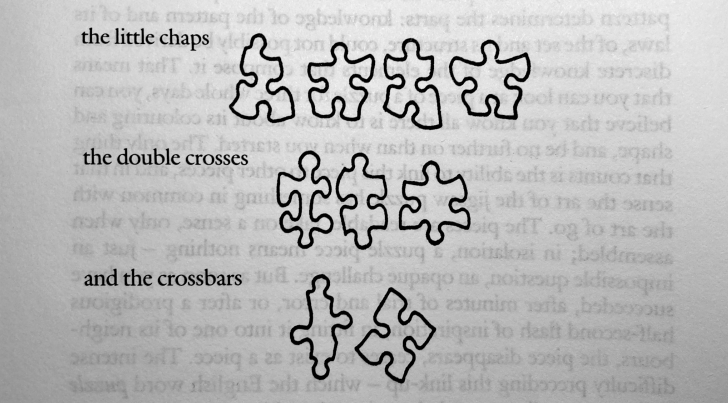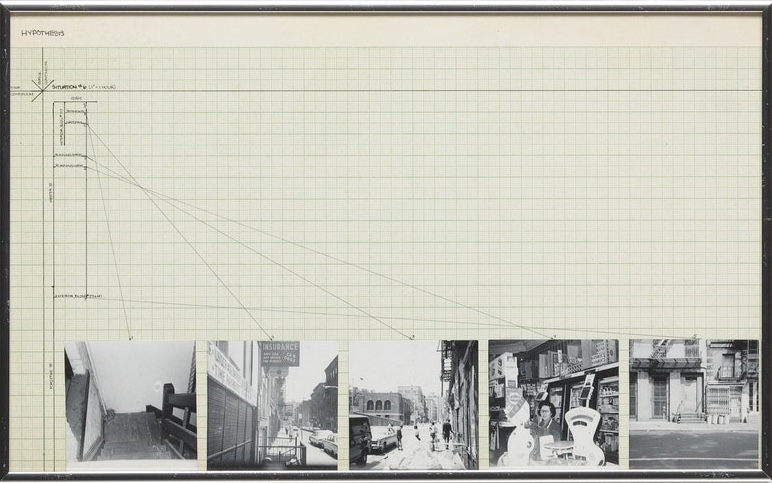The French novelist Georges Perec probably would have fared well during a pandemic.

Besides the company of his cat, he enjoyed jigsaw puzzles. His book Life A User's Manual starts with a meditation on puzzles:
To begin with, the art of jigsaw puzzles seems of little substance, easily exhausted, wholly dealt with by a basic introduction to Gestalt: the perceived object – we may be dealing with a perceptual act, the acquisition of a skill, a physiological system, or, as in the present case, a wooden jigsaw puzzle – is not a sum of elements to be distinguished from each other and analysed discretely, but a pattern, that is to say a form, a structure: the element’s existence does not precede the existence of the whole, it comes neither before nor after it, for the parts do not determine the pattern, but the pattern determines the parts: knowledge of the pattern and of its laws, of the set and its structure, could not possibly be derived from discrete knowledge of the elements that compose it.
As you might perceive from this opening, jigsaw-like sentence, Perec finds, in fact, much of substance in puzzling. A well designed puzzle anticipates the puzzler's "every blunder and every insight, each hope and each discouragement." Each piece inhabits the image to be reassembled in multiple and misleading ways.

The problem of fitting things together depends on the relationships among the parts, and the number of potential relationships grows very quickly with the number of parts. One way to look for continuity is to focus on scale, as Perec does in his long essay Species of Spaces, written a few years before the User's Manual. Another way is to pursue paths as Adrian Piper did a few years earlier than Perec's Spaces in her artwork, The Hypothesis Series (1968-1970).

March 8, 2021
The problem of continuity
Readings
The problem of continuity
Readings
Species-of-Spaces.pdf (Georges Perec)
Hypothesis.pdf (Adrian Piper)
Resources
Life-A-Users-Manual (Georges Perec)